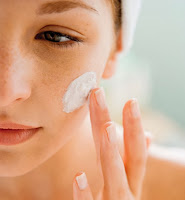In one of my very first posts I wrote about the beneficial effects that coconut oil has had on Alzheimer's sufferers. You can read that article here: Pure Coconut Oil. A "cure" for Alzheimer's
So why is coconut oil so great?
Coconut oil is a powerful destroyer of all kinds of microbes, from viruses to bacteria to protozoa, many of which can be dangerous. It also provides your body with high-quality fat that is essential for optimal health.
About 50% of the fat in coconut oil is lauric acid which is difficult to find naturally. In fact, coconut oil contains the most amount of lauric acid of any substance found in nature.
The body converts lauric acid into monolaurin, a monoglyceride that can actually destroy lipid-coated viruses such as HIV and herpes, flu, measles, gram-negative bacteria, and protozoa such as giardia lamblia. Coconut oil is made up of medium chain fatty acids (MCFAs) that are easily digested and easily cross cell membranes. MCFAs are converted immediately by the liver into energy rather than being stored as fat. Coconut oil is also easy on the digestive system and does not produce an insulin spike in your bloodstream, so it is great for a quick energy boost when needed.
The general health benefits of coconut oil are:
- Promoting Heart Health
- Supporting proper thyroid function
- Promoting healthy brain function
- Providing an excellent healthy fuel for the body which can also support a strong metabolism and aid in weight loss
- Strengthening the immune system
- Maintaining healthy and youthful looking skin
Yes, you heard it right! Coconut oil is an amazing BEAUTY product. Lots of the creams, shampoos and conditioners we use on a daily basis are full of toxic ingredients. Coconut oil can replace all of them. Here's an idea of what coconut oil can do for you:
- Makeup remover: Put some on a moist cotton ball and swipe over your face, then remove with a clean cotton ball or a wet face cloth.
- Facial cleanser: Massage a small amount of coconut oil into your face and neck, wash off with a warm wet face cloth and pat dry.
- Facial Scrub: Mix coconut oil with baking soda, or oatmeal with a dash of cinnamon and gently apply to the face and then rinse.
- Body Scrub: Mix equal parts of coconut oil and cane sugar in a glass jar. Apply to the skin before your shower.
- Shaving lotion: Lots of men find that shaving irritates the skin, just apply a thin layer of coconut oil before shaving and then shave as normal. This also works for shaving legs and underarms or your bikini line.
- Eye cream: Apply a small amount and pat gently around the eye area to soften wrinkles and counteract thinning, sagging skin.
- Face and body moisturizer: You can use as is or mix with your favorite essential oil... just make sure it is apt for topical use. Apply small amounts to your skin and massage in.
- Cuticle Cream: Simply rub a small amount of coconut oil around your cuticles to soften dry areas.
- Bath soak: add a little coconut oil to your bath, it will help moisturize dry itchy skin. Just be careful and clean the bath afterwards, otherwise the next person to use it may slip!
- Deodorant: Apply a small amount of coconut oil directly onto your underarms can help keep odors away. Or you can mix 2 tablespoons of baking soda, 2 tablespoons of arrow root (for thickening) and 3 tablespoons of coconut oil, you can also add an essential oil if you choose for aroma. Mix thoroughly and leave to thicken. Then just apply a small amount to your underarms.
- Insect repellent: Mix coconut oil with high-quality essential oils such as peppermint, lemon balm, rosemary, tea tree oil, citronella, etc., may help keep insects at bay when applied to exposed skin.
- Hair Conditioner: apply to dry hair, and massage into the scalp. Leave on for as long as possible, I cover my head with a shower cap, and then wash and condition as usual. You may need to wash your hair twice!
Other uses for coconut oil:
As coconut oil has brilliant antimicrobial and anti-viral properties it may help in the treatment of:
- Bug bites and bee stings
- Hemorrhoids
- Skin rashes and irritations, including chicken pox and shingles.
- Ear infections: Place a couple of drops into each ear canal.
- Fungal and/or yeast infections such as athlete's foot and ringworm. For fungal infections you can mix in a small amount of oregano oil or tea tree oil.
- Thrush
- Head lice: The European Journal of Pediatrics found that a combination of coconut oil and anise was nearly twice as effective a the usual lotions.
You can also use coconut oil for maintenance around the house:
- Clean, condition and sanitize your wooden cutting board in the kitchen.
- Metal polish.
- Moisturize and soften leather goods as you would using leather conditioners.
- Maintain your cast iron pots and pans.
- Lubricate squeaky hinges and sticky mechanisms with coconut oil instead of WD-40.
- Clean and condition wooden furniture - I recommend you test a small area first.
- Remove chewing gum from virtually any area, including carpets and hair.

The list goes on and on... it really is a true gift from Mother Nature. So if you have a use for coconut oil not mentioned in this post, please let me know.
Social Nutrition:
You can make an appointment to improve your health with Social Nutrition either in person (Madrid) or online (Skype). Just send an email to lucycarr@socialnutrition.com





















